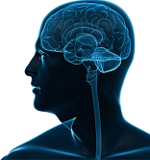Improving sleep with morning exposure to blue light leads to quicker recovery from uncomplicated mTBI
I have discussed research on the important role of sleep in TBI recovery in prior posts. Accordingly, I have encouraged clients to get help with sleep issues as soon as they become apparent after an injury. Studies have shown that approximately 50% of patients diagnosed with mTBI (“mild traumatic brain injury”) experience chronic sleep disruption. There is evidence that the brain repairs itself during sleep, which is one of the reasons why poor sleep can delay recovery. Poor sleep following a brain injury has been associated with disturbance in the normal rhythm of melatonin production.
A recent double-blind, placebo-controlled study by researchers at the University of Arizona, published in Neurobiology of Disease 134 (2020) 104579 (funded by the US Army Medical Research and Development Command ) demonstrated that morning exposure to blue wavelength light improves sleep quality and leads to measurable cognitive improvements and positive changes in brain anatomy and function as measured by functional and structural MRIs.
The subjects in the study had been diagnosed with uncomplicated mTBIs. They received a comprehensive neuropsychological assessment battery and functional and structural MRI scans the day preceding the treatment period and immediately upon completion of treatment. One group was exposed to blue wave light from an LED light box for 30 minutes each morning for six weeks. The control group was exposed to amber light. Blue light suppresses brain production of melatonin – which you don’t want in the morning since it makes you drowsy and prepares you to sleep. Exposure to blue light in the morning shifts the brain’s biological clock so that in the evening melatonin kicks in earlier and helps you to fall asleep and stay asleep.
The blue light group fell asleep and woke up an hour earlier and were less sleepy during the day. They demonstrated clear superiority in performance on a test of visual planning and sequencing ability. Remarkably, they also demonstrated differences from the control group in both functional and structural MRI studies. They showed an increase in volume in the “pulvinar nucleus,” an area of the brain responsible for visual attention. They also demonstrated stronger neural connections between the pulvinar nucleus and other parts of the brain that drive alertness.
This study highlights the importance of identifying and treating sleep disruption to support TBI recovery.

